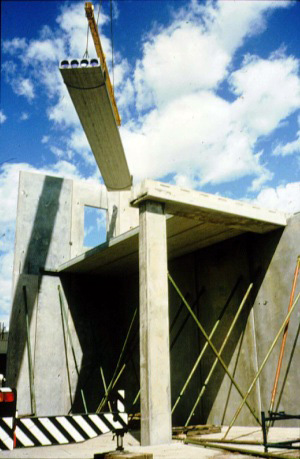4 Fabulous Ceiling Options for Commercial Building Design
Ceilings Add Finesse to Any Space
The choice of the ideal ceiling design depends upon the available room, surrounding walls, the overall theme of the edifice and of course the budget. Lacuna or coffered ceilings, dropped ceilings also known as suspended ceilings, stretch ceiling and hollow-core slab ceilings are the four remarkable options for adding that dazzling feel to the building interiors.
Stenciled Coffered Ceiling

Lacuna or Coffered Ceilings
A coffered ceiling is a decorative ceiling style, made of recessed panels framed by beams. Although square pattern is mostly used, other geometric patterns too can be created. Now-a-days they are mostly used to add interest and a personal touch to ceiling design.
Cost of Coffered Ceilings
Coffered ceilings are more expensive than installing a simple plasterboard ceiling. However these are considerably more appealing and striking.
Advantages
- Improves acoustics and value of your home
- Helps to add character and visual appeal
Disadvantages
- More expensive
- Not always attractive for small rooms
Installed Dropped Ceiling

Suspended or False Ceilings
As the name suggests, suspended ceiling, also known as dropped ceiling is a secondary ceiling that hangs below an existing ceiling. It is mostly used in industrial and commercial building design that has roofing tiles. It can conceal the poor condition of an existing ceiling, the wires and pipes.
As these are made from fiberglass, they are very good in soundproofing and enhancing acoustics. Dropped ceiling finishes are even suitable for homes.
Advantages
- Inexpensive
- Helps in soundproofing and improves insulation
- Disguises wires, pipes and ducts or ugly ceilings
- Can be easily maintained and repaired.
Disadvantages
- Makes the room smaller
- Wears more quickly
Stretch Ceiling System

Stretch Ceilings
A stretch ceiling is similar to a dropped ceiling. It is placed under the structural ceiling of a room. It consists of a piece of PVC material 'stretched' across an area and is held in place by a frame called a 'perimeter profile'.
Why Install A Stretch Ceiling?
It helps to disguise the bad condition of an existing ceiling, conceal wires, pipes or ducting. It also helps to soundproof rooms or improve audio quality. It can be manipulated into domes, arches and organic 3D shapes. The PVC can be removed for dry cleaning too.
Advantages
- Can help to disguise poor condition of ceiling, wires, pipes and ducts
- This ceiling helps to create unique shapes and designs
- Easy to install and easy to clean for commercial building design
- Good for acoustics
Disadvantages
- May be more expensive than some other options
Ceilings for Commercial Structures

Hollow-Core Slab Ceilings
A hollow-core slab ceiling is made from concrete slabs having tube-shaped tunnels running through them. They are mostly used in multi-storey commercial building design or industries to impart a contemporary look. They can be used to carry communication cables, heating and lighting wires.
Cost of Hollow-Core
Hollow-core concrete slabs require fewer expenses.
Advantages
- Economic option for large spaces.
- Prefabrication results in quick installation.
- Lower transportation costs due to light weight.
Disadvantages
- Not suitable for Earthquake-prone regions buildings
- Not useful for soundproofing
- Not appropriate for a timber framed house








